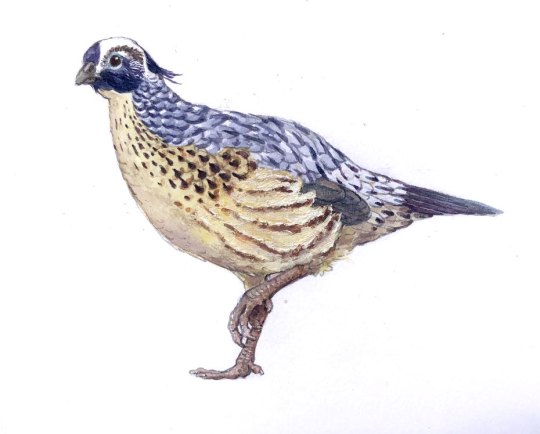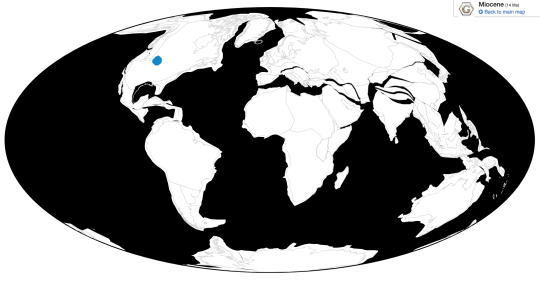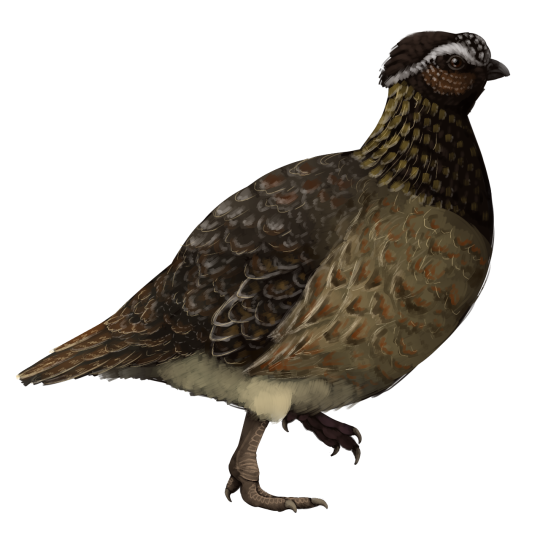
By Ripley Cook
Etymology: Miocene Quail
First Described By: Miller, 1944
Classification: Dinosauromorpha, Dinosauriformes, Dracohors, Dinosauria, Saurischia, Eusaurischia, Theropoda, Neotheropoda, Averostra, Tetanurae, Orionides, Avetheropoda, Coelurosauria, Tyrannoraptora, Maniraptoromorpha, Maniraptoriformes, Maniraptora, Pennaraptora, Paraves, Eumaniraptora, Averaptora, Avialae, Euavialae, Avebrevicauda, Pygostaylia, Ornithothoraces, Euornithes, Ornithuromorpha, Ornithurae, Neornithes, Neognathae, Galloanserae, Pangalliformes, Galliformes, Phasiani, Odontophoridae
Referred Species: M. teres, M. aldeni
Status: Extinct
Time and Place: Between 23 and 16 million years ago, from the Aquitanian to the Burdigalian ages of the Miocene of the Neogene


Miortyx is known from the Batesland Formation and middle member of the Sharp’s Formation of South Dakota

Physical Description: Miortyx is the oldest known member of the American Quail, a group of small birds with similar habits (but far distance in relation) to Old World Quail. These are shy, diurnal, terrestrial birds, with generalist diets. As such, Miortyx probably resembled its modern relatives in most ways, with round bodies and tiny heads. They probably also had tiny beaks and only somewhat decent flight ability. They probably also had short, boxy wings, like other American Quail. These birds were larger than their modern relatives, making them an interesting transitional form between larger fowl (such as pheasants) that these quail evolved from, and the smaller quail we have today. Both species are known from ends of humeri, making it difficult to say more about them.
Diet: A mixture of grains, seeds, and invertebrates that it could pluck from the ground.
Behavior: Miortyx would probably have behaved similar, if not identical, to living quail, spending most of its time walking around and bobbing its head as it tried to peck up food from the ground. They probably lived in large flocks, which would rarely rely on flight to get away, instead running away in a silly and bobbing fashion. When flying, it would have been an awkward, sporadic sort of flight. They would have taken care of their young for at least some time, and the young were probably precocial.

By Scott Reid
Ecosystem: Miortyx lived across the transition of environments in South Dakota during the Early through the Middle Miocene. During this time, grasslands were starting to grow, creating the famed American plains. Still, forests were a major feature of the ecosystem. Miortyx aldeni lived in the middle ecosystem of the Sharp’s Formation, a braided river channel in an extensive forest. This forest was in the middle of a valley, with a lot of different types of trees like sycamore, poplar, alder, and ash. Here, it lived alongside other dinosaurs such as Arikarornis, an Old World Vulture (in the New World!), and the large flightless bird of prey Bathornis (a kind that convergently evolved a very similar lifestyle to the Terror Birds of the South). There were also a variety of mammals such as proto-horses, primates, marsupials, rabbits, deer, rodents, and predatory mammals.
The later Batesland formation featured the growth of grasslands into the area, though where Miortyx teres was found was still forested. This was a stream system flowing out of nearby rivers and lakes, with well-developed surrounding woodland featuring many of the same plants as the earlier area. Nearby grasslands were bleeding in, though it was still more forested than what one would see today. Here there were many other dinosaurs such as the Chachalaca Boreortalis, crakes like Ortalis, grouse Typmanuchus, ducks like Dendrochen and Querquedula, a swan Paranyroca, an Old World Vulture Palaeoborus, an owl Strix dakota, and even the swimming-flamingo Megapaleolodus. There were also countless mammals like a startling number of rodents, many kinds of hoofed mammals including horses, predatory mammals, rabbits, and hedgehogs and shrews.
Other: Miortyx is the oldest record of American Quail, making it an important find for that group’s biogeographical history.
Species Differences: M. aldeni is slightly larger than its cousin M. teres, and also older, coming from the Middle Sharp’s Formation rather than the later Batesland Formation.
~ By Meig Dickson
Sources under the Cut
